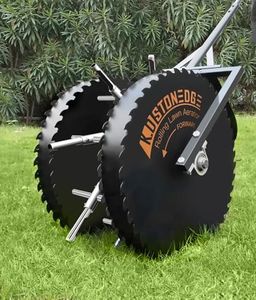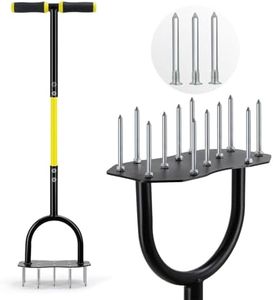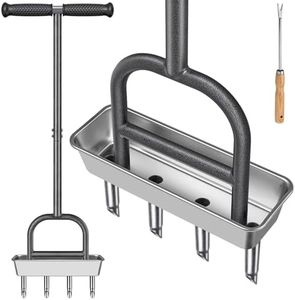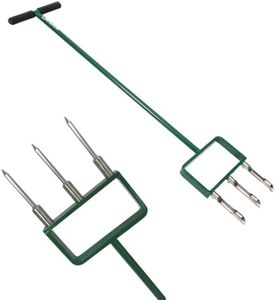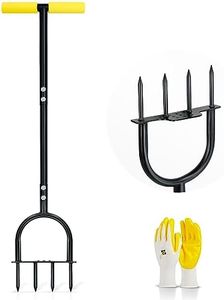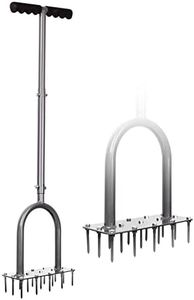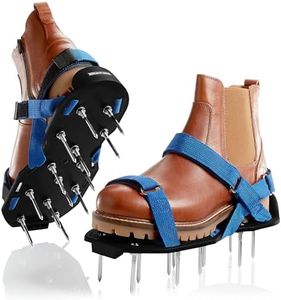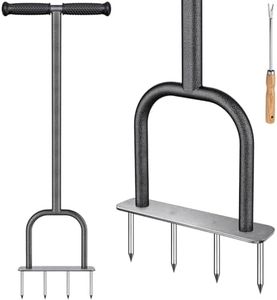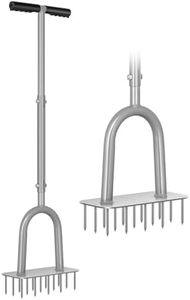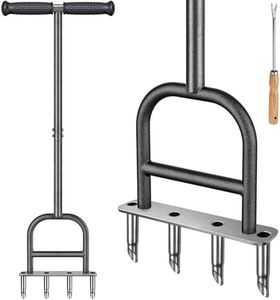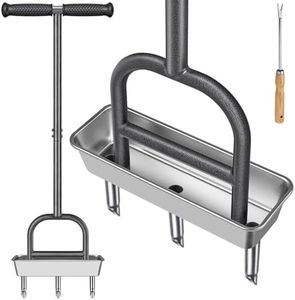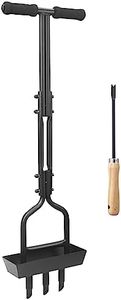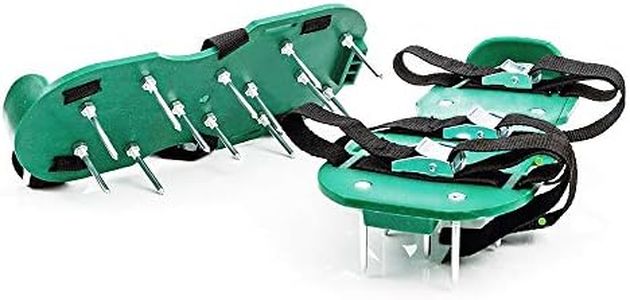We Use CookiesWe use cookies to enhance the security, performance,
functionality and for analytical and promotional activities. By continuing to browse this site you
are agreeing to our privacy policy
10 Best Hand Lawn Aerator
From leading brands and best sellers available on the web.Buying Guide for the Best Hand Lawn Aerator
Choosing a hand lawn aerator is all about finding the right balance between the tool’s ease of use, effectiveness, and your lawn’s specific needs. A lawn aerator helps improve the health of your grass by making small holes in the soil, which allows air, water, and nutrients to reach the roots. When selecting one, it’s important to think about the size and type of your lawn, your physical abilities, and how often you plan to aerate. By focusing on a few key specifications, you can choose a model that will keep your lawn looking healthy without causing too much hassle or effort.Aeration TypeAeration type refers to how the tool makes holes in your lawn. The two most common types are spike and plug (core) aerators. Spike aerators push solid tines into the soil, creating holes without removing any material, which can help with light compaction. Plug or core aerators remove small plugs of soil, making them better for heavier compaction and more significant lawn health improvements. If your lawn is only lightly compacted, a spike aerator will be easier to use, but for more compacted areas or clay-heavy soils, a plug aerator is generally more effective.
Tine Length and MaterialThe tines are the parts that penetrate the soil, and their length determines how deep the aeration goes. Longer tines (typically over 2 inches) reach deeper roots and are better for very compacted soils, while shorter tines (under 2 inches) are sufficient for lighter maintenance. Tines are usually made of steel or other strong metals to withstand hard soil. If your lawn is very compacted, opt for longer, sturdy tines; for regular maintenance, shorter tines will do the job with less effort.
Working WidthWorking width is the total span the aerator covers in a single pass, often ranging from 8 to 18 inches. A wider working width allows you to cover more ground in less time, which is useful for larger lawns but may make the tool heavier or harder to maneuver. For small lawns, a narrow aerator is easier to push and control, while for larger spaces, a wider one increases efficiency.
Handle Design and ErgonomicsHandle design affects how comfortable and easy the aerator is to use. Look for padded, height-adjustable handles or comfortable grips, which reduce strain during use. If you have limited strength or mobility, an ergonomic handle can make aerating easier and more pleasant. Choose a handle design that feels comfortable for your height and grip strength, especially if you plan to aerate often.
WeightWeight refers to how heavy the aerator is. Heavier models may dig into the soil better but can be tiring to use, especially on uneven ground or for extended periods. Lighter aerators are easier to lift and push but may not penetrate dense soils as effectively unless you add extra weight by standing or pressing down during use. Pick a weight you can handle comfortably for the size and condition of your lawn.
Ease of Cleaning and MaintenanceThis is about how simple it is to keep your aerator in good shape after each use. Aerators with fewer moving parts and easy-to-clean tines or blades are less likely to clog and easier to maintain. If you don’t want to spend much time on upkeep, look for a model with straightforward construction and rust-resistant materials so it lasts longer and works reliably.
